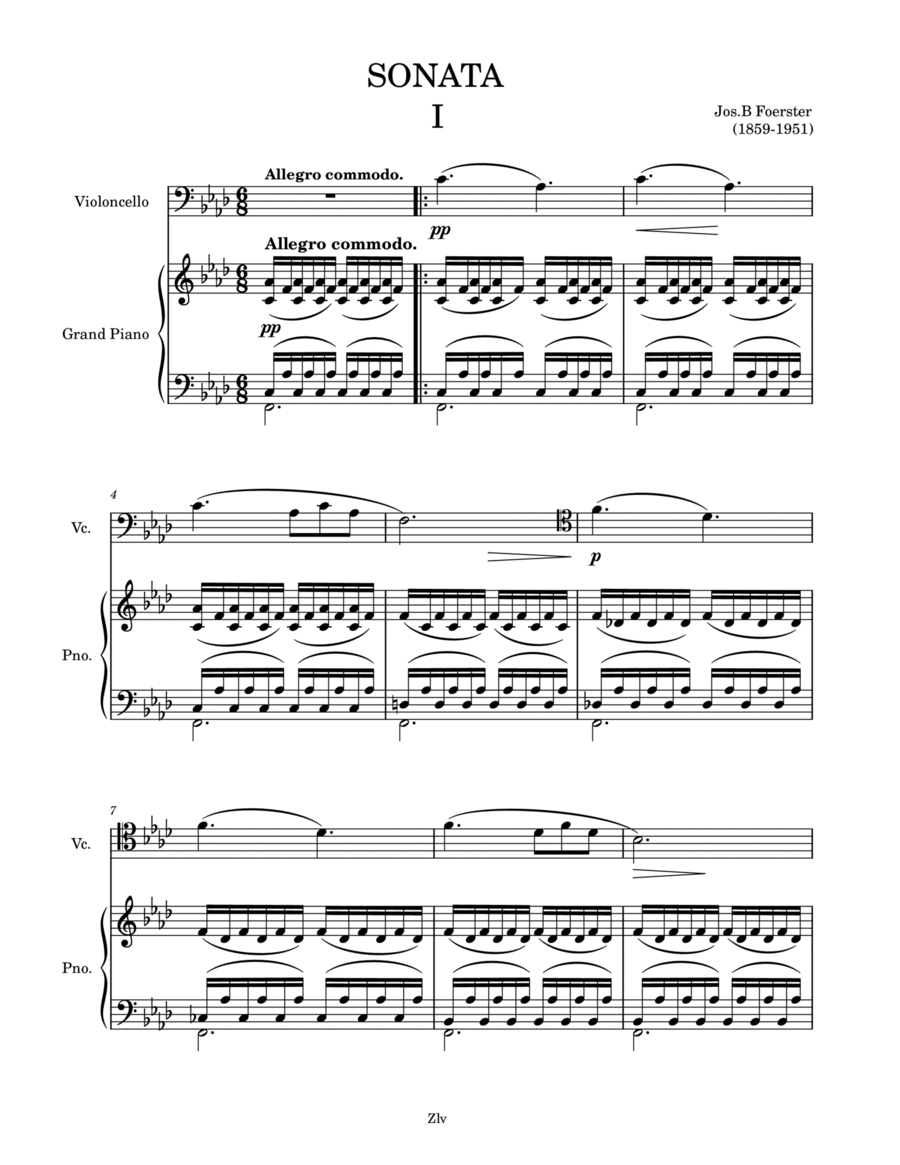Cello,Piano - Level 5 - Digital Download SKU: A0.1431347 Composed by Josef B Foerster. Arranged by Zellev. 19th Century,Classical,Contemporary,Historic,Romantic Period. Score and part. 16 pages. Zellev Music #1011815. Published by Zellev Music (A0.1431347). Key Signature: F minorTime Signature: 6/8Tempo: Allegro CommodoDifficulty: AdvancedJosef Bohuslav Foerster (30 December 1859 29 May 1951) was a Czech composer and musicologist. He is often referred to as J. B. Foerster, and his surname is sometimes spelled Förster.-Life-Foerster was born in Prague. His ancestors were of Bohemian German ethnicity, but had assimilated into the Czech community. The family normally lived in Prague and was musical. His father, a composer also named Josef Foerster, taught at the Conservatory. (His father's students included Franz Lehár.) His brother was artist Viktor Foerster. Josef was educated accordingly, and duly studied there.-Style-Foerster produced numerous compositions. His music is not nationalistic in the sense of employing the idioms of Czech folk music. His work, words and music, is considered [by whom?] very subjective and personal, mystical and idealistic.Foerster's opera Eva is another example, like Leo Janá?ek's Jen?fa, of a libretto based on a play by Gabriela Preissová, though his treatment differs.His compositions include five symphonies (No. 1 in D minor; No. 2 in F, Op. 29 (189298); No. 3 in D, Op. 36; No. 4 in C minor, Op. 54, Easter Eve (1905); and No. 5 in D minor, Op. 141 (1929)), other orchestral works including a symphonic poem based on Cyrano de Bergerac, much chamber music (including five string quartets (No. 1 in E, Op. 15; No. 2, Op. 39; No. 3 in C, Op. 61; No. 4 in F, Op. 182 (1943); and the last, written 19501, completed by Jan Hanu); three piano trios, two violin and two cello sonatas, and a several-times-recorded wind quintet), at least five operas (notably Eva), concertos for cello (Op. 143) and two for violin (No. 1 in C minor, Op. 88 (1911); No. 2 in D minor, Op. 104), liturgical music, among other works, over 170 published opus numbers in all.Many of his works remember family members: the 2nd Symphony is dedicated to his sister Marie; his brother's death led to the cantata Mortuis fratribus; his son is commemorated in the Piano Trio and the 5th Symphony; and his mother is a theme throughout his oeuvre.
